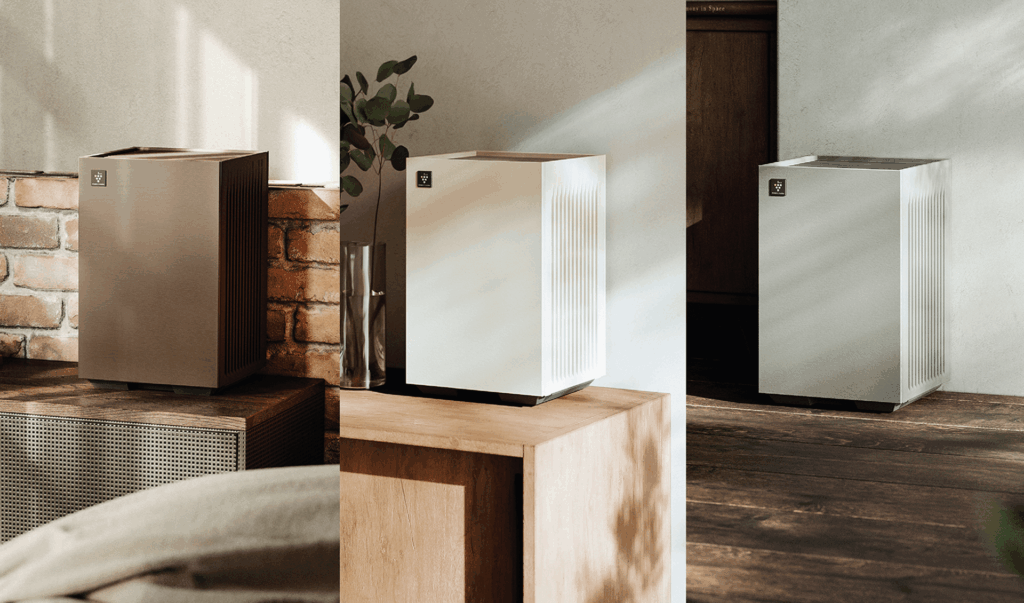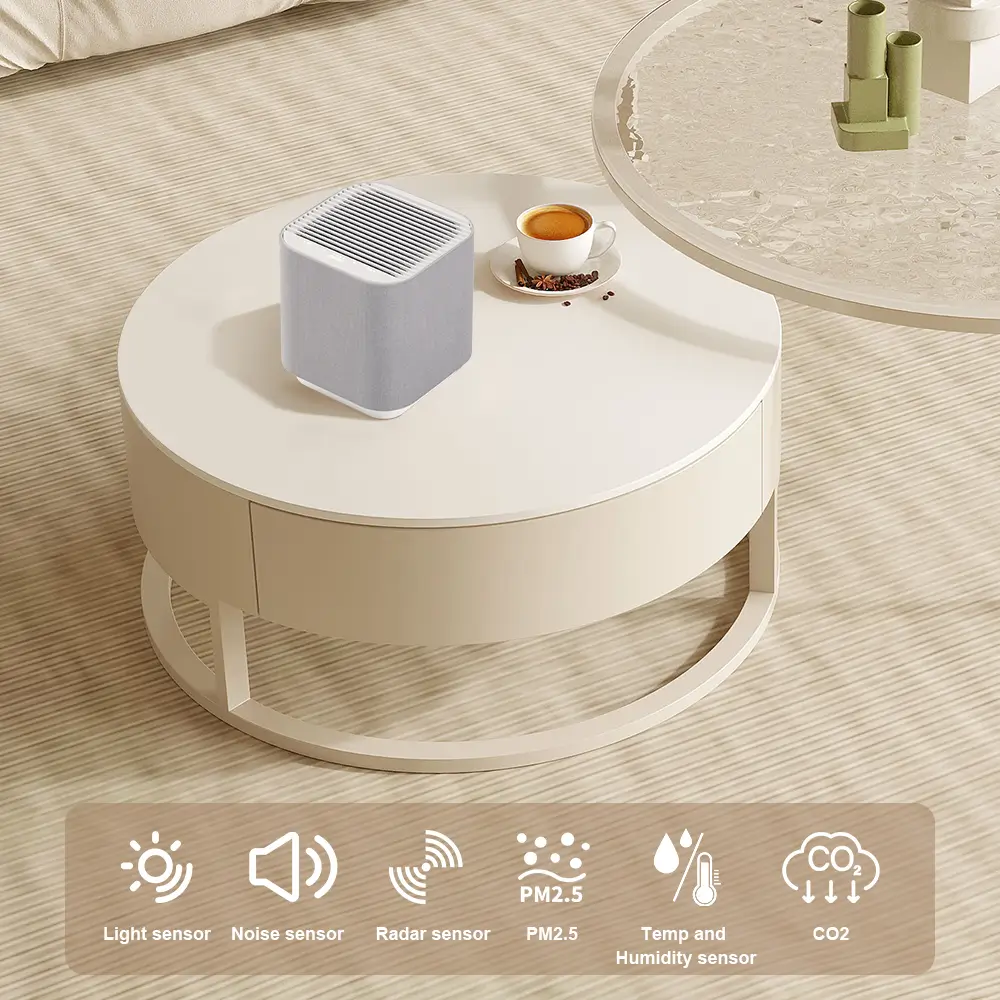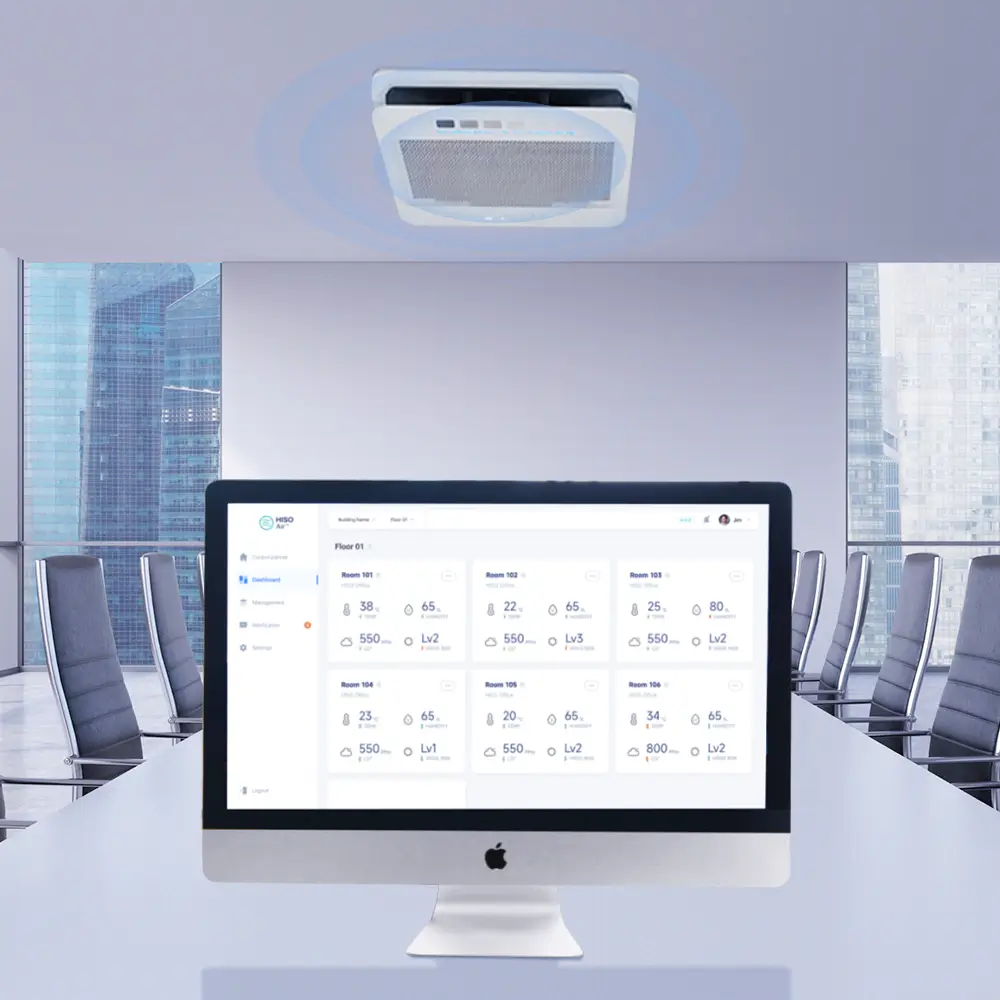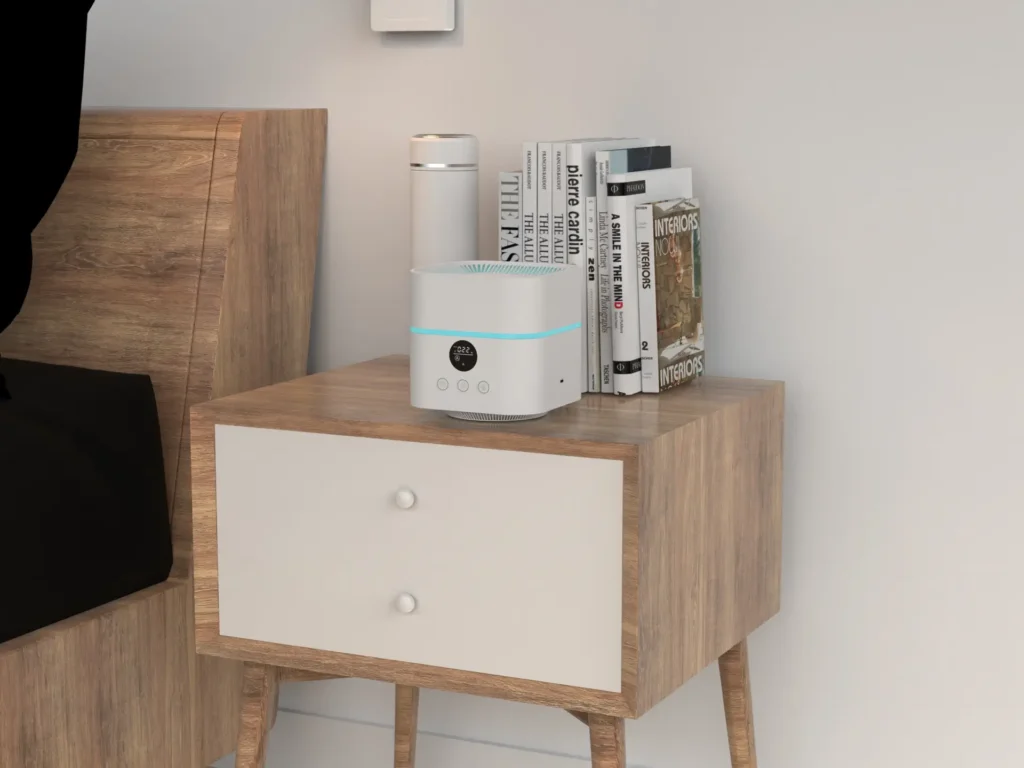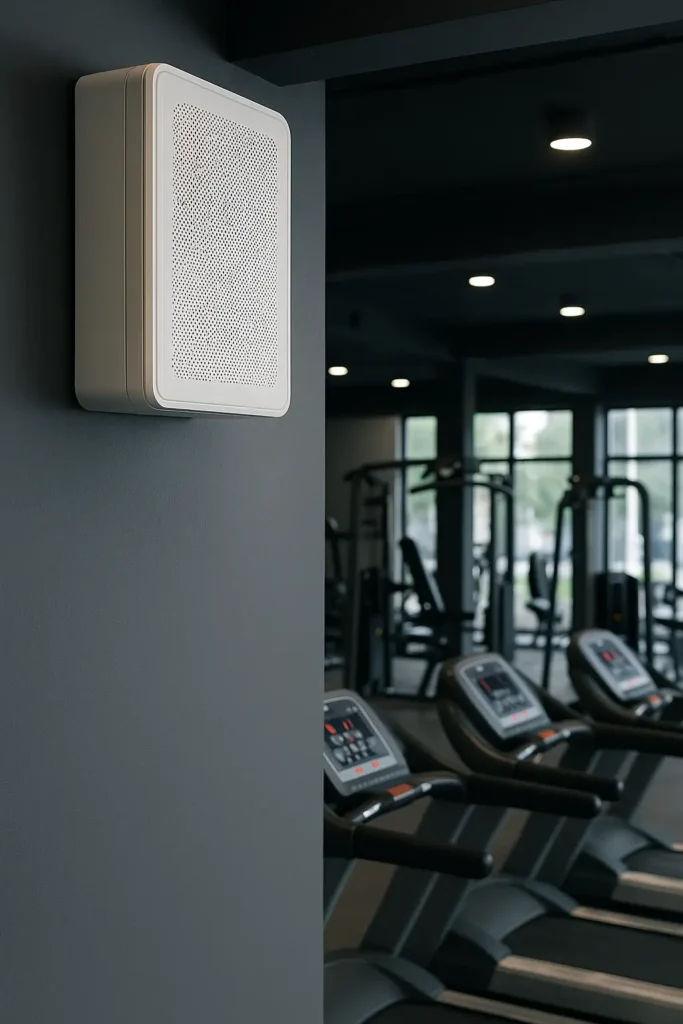
Il n'a jamais été aussi important de bien respirer chez soi, d'autant plus que la qualité de l'air est devenue un sujet d'actualité. Avec des choix tels que les purificateurs d'air ou les améliorations des systèmes de chauffage, de ventilation et de climatisation, il peut être difficile de décider ce qui est le mieux pour garder l'air pur.
Les purificateurs d'air sont souvent plus efficaces que les systèmes CVC traditionnels pour éliminer les petites particules et les allergènes de l'air, grâce à leur haute efficacité. HEPA des filtres. Alors que les systèmes CVC gèrent la température et l'humidité pour l'ensemble de la maison, les purificateurs d'air se concentrent sur des pièces spécifiques, capturant 99,97% de particules aussi minuscules que 0,3 micron.
Je me souviens de l'époque où mes allergies me rendaient folle, j'avais l'impression de me battre contre des ennemis invisibles à l'intérieur de ma propre maison. C'est alors que j'ai commencé à m'intéresser aux purificateurs d'air et aux systèmes CVC. Voici ce que j'ai découvert : alors que les purificateurs d'air excellent à cibler des zones spécifiques grâce à leurs capacités de filtration avancées, les systèmes CVC sont l'épine dorsale du confort de toute la maison, gérant la température et l'humidité. Il est essentiel de prendre en compte les coûts, les normes de conformité et même les tendances technologiques à venir dans cette décision.
En explorant ces options, je me suis retrouvée à la croisée des chemins entre l'aspect pratique et le confort. Les purificateurs d'air sont généralement plus abordables et facilement disponibles en ligne, ce qui en fait un choix intéressant pour un soulagement immédiat. Par ailleurs, la modernisation d'un système de chauffage, de ventilation et de climatisation peut représenter un investissement important, mais s'intègre parfaitement à la structure d'une maison ou d'un bureau. Après le COVID, la demande d'un air intérieur plus sain a explosé, ce qui a conduit à des innovations telles que des intégrations intelligentes entre les technologies de purification de l'air et les systèmes de CVC. Cette tendance pourrait bien révolutionner la manière dont nous abordons la qualité de l'air intérieur, en associant l'IA et les technologies de l'information et de la communication (TIC). IdO pour des solutions plus intelligentes.
Les purificateurs d'air sont plus rentables que les systèmes CVC.Vrai
Les purificateurs d'air peuvent être achetés en ligne, tandis que les systèmes de CVC nécessitent une installation coûteuse.
Les systèmes CVC utilisent des filtres HEPA comme les purificateurs d'air.Faux
Les systèmes CVC utilisent généralement des filtres MERV, et non HEPA, qui sont moins efficaces.
En quoi les purificateurs d'air et les systèmes de chauffage, de ventilation et de climatisation diffèrent-ils en termes de filtration ?
Vous êtes-vous déjà demandé ce qui distinguait vraiment les purificateurs d'air des systèmes CVC ? Plongeons dans l'univers des purificateurs d'air et découvrons leurs secrets de filtration.
Les purificateurs d'air et les systèmes de chauffage, de ventilation et de climatisation (CVC) présentent des performances de filtration très variables. Les purificateurs d'air, souvent équipés de HEPA excellent à piéger 99,97% de minuscules particules aussi petites que 0,3 micron. En revanche, les systèmes de CVC utilisent MERV-Les filtres à particules sont plus performants et se concentrent davantage sur les particules les plus grosses, tout en maintenant une bonne ventilation générale.
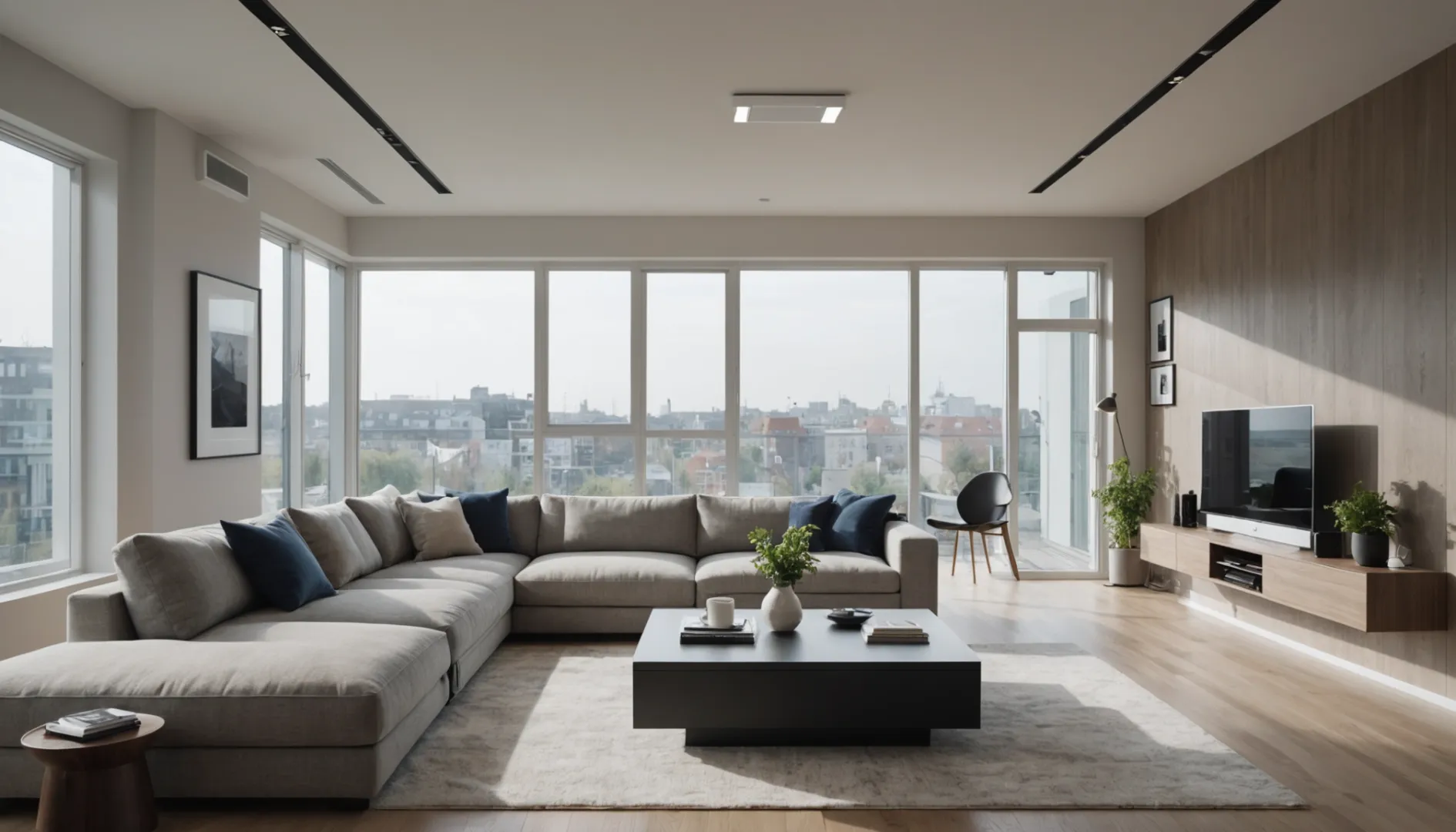
Comprendre HEPA et MERV Filtres
Je me souviens de la première fois où j'ai décidé de m'attaquer au problème de la poussière dans mon appartement. J'ai opté pour un purificateur d'air parce que son filtre à particules à haute efficacité (HEPA) promettait de capturer les plus petites particules - comme les squames d'animaux domestiques et le pollen - qui faisaient des ravages dans mes allergies. Ces HEPA sont une merveille, capturant des particules aussi petites que 0,3 micron avec un taux d'efficacité de 99,97%. En revanche, lorsque j'ai examiné le système de chauffage, de ventilation et de climatisation de notre bâtiment, j'ai constaté qu'il utilisait des valeurs minimales d'efficacité (MERV). Ces filtres vont de MERV 1 à MERV 16, et bien que des chiffres plus élevés signifient une meilleure filtration, ils ne peuvent toujours pas rivaliser avec la précision de mon fidèle purificateur d'air. En savoir plus sur HEPA filtres1.
Rôle dans la gestion de la qualité de l'air
Lorsque je pense à la gestion de la qualité de l'air dans ma maison, je vois les purificateurs d'air comme mon outil de prédilection pour des pièces spécifiques, en particulier celles où nous passons le plus de temps, comme le salon ou la chambre à coucher. En revanche, les systèmes de chauffage, de ventilation et de climatisation (CVC) constituent l'épine dorsale de la climatisation de notre maison, régulant la température et l'humidité dans l'ensemble de la maison. Ils mettent l'accent sur la circulation de l'air plutôt que sur la précision de la filtration, ce qui est une considération essentielle si vous êtes comme moi et que vous voulez vous assurer que les particules les plus petites sont traitées efficacement. Découvrez les avantages des systèmes CVC2.
Considérations sur les coûts et normes de conformité
Le coût a été un facteur déterminant pour moi. J'ai trouvé que les purificateurs d'air étaient assez abordables et faciles à acheter en ligne, en particulier sur des plateformes comme Amazon. Ils relèvent de l'Association of Home Appliance Manufacturers (AHAM), ce qui m'a rassuré quant à leur efficacité. Mais lorsque j'ai vérifié les options des systèmes CVC, il est apparu clairement qu'ils nécessitaient une conception et une installation sur mesure, ce qui représente un investissement important ! Ces systèmes sont conformes aux normes établies par l'American Society of Heating, Refrigerating and Air-Conditioning Engineers (ASHRAE), ce qui est crucial pour les nouvelles constructions. Comme de plus en plus de gens prennent conscience des problèmes de qualité de l'air après le COVID-19, l'intégration de la technologie de purification de l'air dans les systèmes de CVC devient de plus en plus populaire. Découvrir AHAM et ASHRAE normes3.
Tendances futures des technologies de filtration
L'évolution de notre vision de la qualité de l'air intérieur a été incroyable depuis la conférence COVID-19. J'ai vu des innovations comme le purificateur d'air portable de Wellcube faire des vagues en s'intégrant aux infrastructures des bâtiments existants. Ce type de technologie tire parti de l'IA et de la IdO pour améliorer considérablement la gestion de la qualité de l'air. L'avenir semble prometteur pour ceux d'entre nous qui veulent des solutions plus intelligentes pour garder notre air intérieur propre et sain. Restez informé des tendances en matière de purification de l'air4.
Les purificateurs d'air sont plus rentables que les systèmes CVC.Vrai
Les purificateurs d'air sont moins chers et disponibles en ligne, tandis que les systèmes de CVC nécessitent une installation coûteuse.
Les systèmes CVC utilisent des filtres HEPA comme des purificateurs d'air.Faux
Les systèmes CVC utilisent généralement des filtres MERV, et non HEPA, qui sont moins efficaces.
Quels sont les coûts à prendre en compte pour les purificateurs d'air par rapport aux systèmes de chauffage, de ventilation et de climatisation ?
Choisir entre un purificateur d'air et un système de chauffage, de ventilation et de climatisation peut donner l'impression de choisir entre une berline fiable et un SUV de luxe. Examinons les coûts et les avantages de chacun d'entre eux afin de trouver celui qui convient le mieux à votre maison.
Les purificateurs d'air coûtent généralement moins cher au départ et sont plus simples à installer que les systèmes de CVC. Cependant, ces derniers améliorent la qualité de l'air dans toute la maison et intègrent souvent des technologies de purification avancées, ce qui a un impact sur leur valeur à long terme.
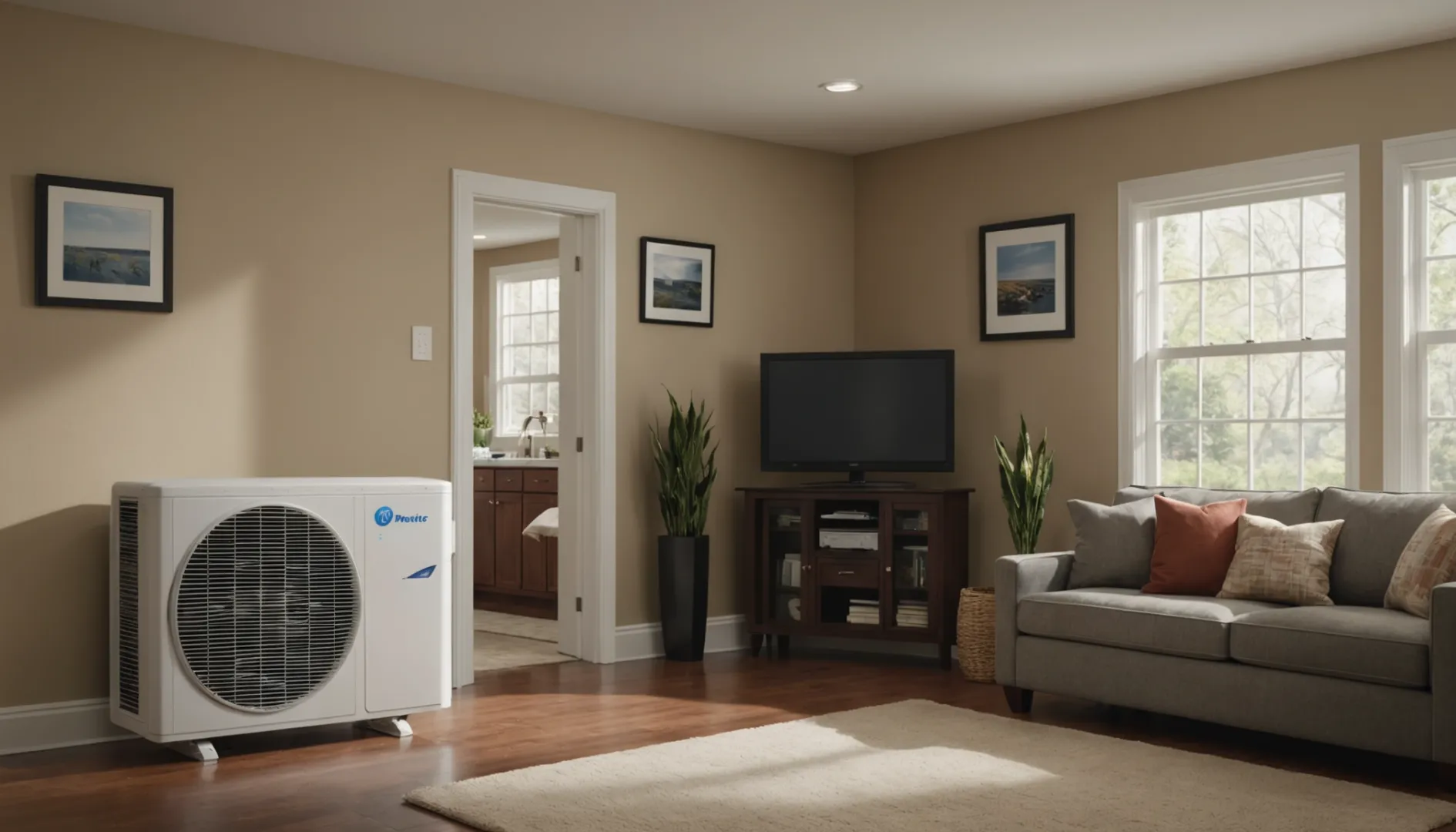
Coûts initiaux et installation
Lorsque j'ai envisagé pour la première fois d'améliorer la qualité de l'air chez moi, j'ai été attirée par la simplicité des purificateurs d'air. Ces appareils autonomes étaient faciles à commander en ligne - pas de complications, juste quelques clics et quelques centaines de dollars plus tard, ils étaient en route. En revanche, lorsque je pense à un système de chauffage, de ventilation et de climatisation, j'ai l'impression d'être en train d'envisager l'achat d'une nouvelle voiture. Les coûts initiaux sont nettement plus élevés, sans parler des frais d'installation par des professionnels. Si vous construisez une nouvelle maison ou si vous remplacez un ancien système, cela peut représenter un investissement considérable.
Les coût de l'installation CVC5 peut aller de plusieurs milliers à plusieurs dizaines de milliers de dollars, selon la taille de la maison et la complexité du système. Toutefois, les progrès technologiques ont permis de mettre au point des systèmes plus efficaces qui pourraient justifier le coût initial plus élevé au fil du temps.
Dépenses de fonctionnement et d'entretien
Avec le temps, j'ai réalisé que l'entretien de ces systèmes constituait le véritable engagement. Mon système CVC fonctionne comme une horloge tout au long de l'année, garantissant le confort de ma maison quelle que soit la saison. Cela implique un entretien régulier, comme le changement des filtres et les révisions occasionnelles. D'un autre côté, cela contribue à l'efficacité énergétique globale, ce qui peut se traduire par une réduction des factures d'électricité.
Les purificateurs d'air consomment moins d'énergie, mais nécessitent des changements de filtre fréquents, en particulier ceux qui sont équipés d'un filtre à air. HEPA des filtres. Si vous possédez plusieurs appareils dans la maison, vous risquez de voir le coût cumulé augmenter.
Valeur à long terme et intégration
La valeur à long terme dépend vraiment des besoins spécifiques de votre foyer. Notre famille compte des membres souffrant d'allergies. La solution globale d'un système CVC avec technologie de purification intégrée s'est donc imposée d'elle-même. Elle gère non seulement les polluants, mais aussi l'humidité et la température, ce qui est essentiel pour les personnes souffrant de problèmes respiratoires.
La tendance est de plus en plus à l'intégration technologie de purification de l'air avec CVC6 systèmes. Des innovations telles que Wellcube promettent une gestion plus intelligente de la qualité de l'air grâce à l'IA et à la technologie de l'information. IdO. Bien que ces mesures augmentent les coûts initiaux, elles permettent de réaliser d'importantes économies à long terme grâce à l'amélioration de l'efficacité.
Évolution des normes et des tendances
Avec la prise de conscience croissante de la qualité de l'air intérieur, les purificateurs d'air et les systèmes de chauffage, de ventilation et de climatisation (CVC) redoublent d'efforts. Ils doivent répondre à des normes rigoureusesAHAM pour les purificateurs et ASHRAE pour les systèmes CVC.
L'imminence de la Législation de 20257 devrait favoriser l'intégration de la technologie de purification dans les systèmes de CVC, ce qui les rendra encore plus attrayants pour ceux qui cherchent à préparer leur maison à l'avenir.
Les purificateurs d'air sont plus rentables que les systèmes CVC.Vrai
Les purificateurs d'air sont moins chers et plus faciles à acheter en ligne que les systèmes CVC.
Les systèmes CVC utilisent des filtres HEPA pour la purification de l'air.Faux
Les systèmes CVC utilisent généralement des filtres MERV 13-16, et non HEPA.
Comment les normes de conformité affectent-elles les purificateurs d'air et les systèmes CVC ?
Vous êtes-vous déjà demandé pourquoi votre purificateur d'air ou votre système CVC fonctionne comme il le fait ? C'est une question de normes de conformité !
Les normes de conformité telles que AHAM et ASHRAE dictent la sécurité, l'efficacité et les performances des purificateurs d'air et des systèmes de chauffage, de ventilation et de climatisation. Ils veillent à ce que ces appareils éliminent efficacement les polluants et préservent la qualité de l'air, protègent la santé des consommateurs et garantissent le contrôle de la qualité.
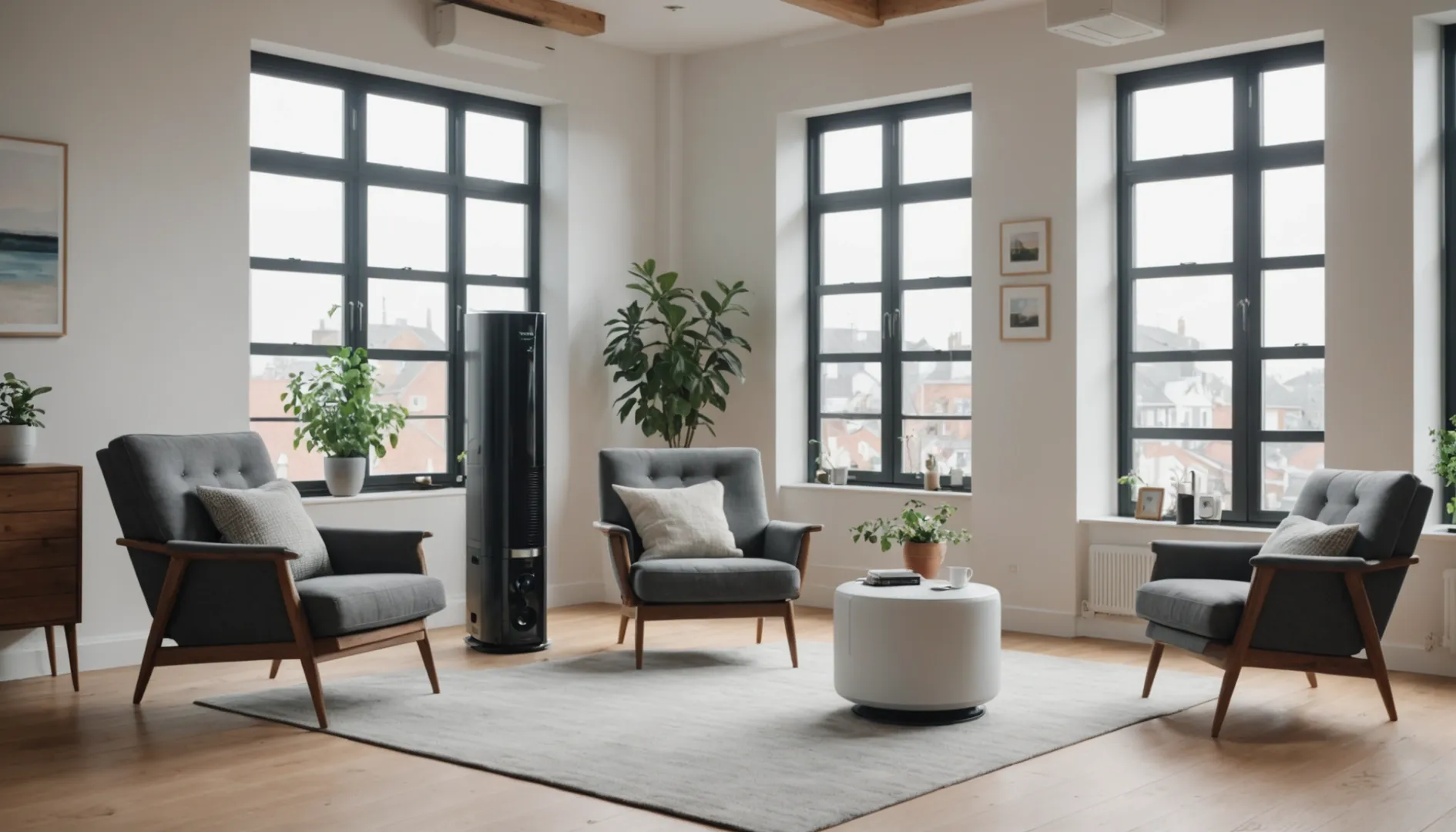
Le rôle des normes de conformité
Je me souviens de la première fois où j'ai réalisé l'importance des normes de conformité. C'était juste après avoir acheté mon premier purificateur d'air. À l'époque, je souffrais d'allergies et j'avais besoin d'un appareil capable de purifier l'air de mon petit appartement. C'est alors que j'ai découvert le AHAM standard8qui m'a aidé à comprendre l'efficacité du purificateur à éliminer la fumée, la poussière et le pollen. Cela m'a permis de me sentir plus confiant lors de mon achat, car je pouvais être sûr que le produit répondait à certains critères de sécurité et d'efficacité.
De même, si vous avez déjà été chargé de l'entretien d'un système CVC, vous savez qu'il ne s'agit pas seulement de garder la fraîcheur en été ou la chaleur en hiver. L'entretien d'un système de chauffage, de ventilation et de climatisation ASHRAE normes9 sont essentiels car ils fixent des lignes directrices pour la consommation d'énergie tout en garantissant que le système maintient efficacement un environnement confortable. Cela est particulièrement important dans les grands bâtiments où la consommation d'énergie peut monter en flèche.
Impact sur la conception et la performance
Lorsque j'ai choisi un purificateur d'air avec un HEPA Je l'ai fait parce qu'il présentait des capacités de filtration spécifiques : il éliminait 99,97% de particules aussi petites que 0,3 micron. Cela a fait une différence notable dans mes symptômes d'allergie, car il a filtré efficacement les allergènes et les polluants. Pour les systèmes de chauffage, de ventilation et de climatisation, le respect des normes ASHRAE signifie qu'ils sont conçus pour réguler efficacement la température et les niveaux d'humidité, ce qui nous a sauvé la vie lors d'un été particulièrement torride.
Progrès technologiques et tendances futures
La technologie évolue sans cesse, et cela vaut également pour la purification de l'air. J'ai récemment pris connaissance d'innovations telles que le Wellcube10Un purificateur d'air portable qui s'intègre aux systèmes de gestion des bâtiments pour améliorer la qualité de l'air. À l'avenir, les futures réglementations pourraient exiger que tous les nouveaux systèmes intègrent une technologie de purification d'ici à 2025, afin de garantir qu'ils répondent aux exigences d'une meilleure qualité de l'air à l'intérieur des bâtiments.
L'importance de rester informé
Après avoir vécu la pandémie, j'ai pris conscience de la qualité de l'air intérieur. La compréhension des normes de conformité m'a aidé à faire de meilleurs choix lors de l'achat de produits destinés à assurer la sécurité de ma maison. Pour les fabricants, le respect de ces normes signifie que leurs produits restent compétitifs sur un marché qui accorde de plus en plus d'importance à la sécurité et à l'innovation.
Les purificateurs d'air sont conformes aux normes AHAM.Vrai
Les purificateurs d'air sont considérés comme des appareils ménagers et répondent aux normes AHAM.
Les systèmes CVC utilisent des filtres HEPA pour la purification de l'air.Faux
Les systèmes CVC utilisent généralement des filtres MERV 13-16, et non des filtres HEPA.
Quelles sont les tendances futures qui façonnent les technologies de purification de l'air ?
J'ai toujours été fasciné par la façon dont la qualité de l'air peut transformer notre vie quotidienne, et ces tendances passionnantes en matière de purification de l'air font passer les choses à un tout autre niveau.
L'avenir des technologies de purification de l'air est porté par des innovations en matière de filtration avancée, d'intégration de la maison intelligente et d'engagement en faveur de l'efficacité énergétique et de la durabilité.

Systèmes de filtration avancés
Je me souviens de la première fois où j'ai réalisé à quel point l'air était plus pur après l'utilisation d'un filtre de haute qualité. Il est incroyable de voir le chemin parcouru depuis. Filtre à particules à haute efficacité (HEPA) restent la référence en matière de piégeage des particules minuscules, mais nous y ajoutons aujourd'hui des matériaux encore plus avancés. Des innovations telles que les oxydation photocatalytique11 et filtres à charbon actif12 sont en passe de devenir des solutions de choix pour lutter contre les COV et les odeurs tenaces.
Intégration avec la technologie de la maison intelligente
Le jour où j'ai connecté mon purificateur d'air à mon réseau domestique a changé la donne. Désormais, d'une simple pression sur mon smartphone, je peux contrôler la qualité de l'air dans ma maison, où que je sois. De nombreux appareils sont désormais équipés du Wi-Fi, ce qui leur permet de se synchroniser en toute transparence avec nos systèmes domestiques intelligents. Imaginez que des capteurs ajustent les paramètres de l'air en fonction de données en temps réel : c'est comme si vous aviez un assistant personnel pour la qualité de l'air ! L'intégration de IdO13 signifie que ces purificateurs font désormais partie d'un ensemble beaucoup plus vaste, fonctionnant main dans la main avec les systèmes CVC pour être aussi efficaces que possible sur le plan énergétique.
Priorité à l'efficacité énergétique et à la durabilité
J'ai toujours été préoccupée par mon empreinte écologique, et le fait que les purificateurs d'air évoluent vers la durabilité est vraiment encourageant. Ils sont de plus en plus économes en énergie, grâce aux progrès de la technologie et de la conception. L'intégration de les sources d'énergie renouvelables14 et l'utilisation de matériaux de fabrication respectueux de l'environnement ne sont que quelques-uns des moyens utilisés pour réduire l'impact de ces appareils sur notre planète. La législation oriente également les fabricants vers des innovations plus écologiques, ce qui est bénéfique pour tous ceux qui se soucient de l'environnement.
Gestion améliorée de la qualité de l'air intérieur
Après la conférence COVID-19, comme beaucoup de gens, je suis devenu plus attentif à l'air que je respire à l'intérieur. Aujourd'hui, les technologies offrent des solutions qui ne se contentent pas de purifier, mais qui gèrent la qualité de l'air de manière globale. Des systèmes tels que Wellcube évoluent pour s'intégrer aux infrastructures des bâtiments, nous donnant ainsi un aperçu de la qualité de l'air intérieur comme jamais auparavant. Il est étonnant de penser que la purification de l'air ne sera bientôt plus qu'une pièce d'un puzzle plus vaste et plus intelligent de gestion de l'environnement intérieur. Imaginez un monde où la qualité de l'air est surveillée en permanence et optimisée automatiquement - ce n'est plus de la science-fiction.
Les purificateurs d'air utilisent des filtres HEPA pour une filtration élevée.Vrai
Les filtres HEPA des purificateurs d'air capturent 99,97% des particules de 0,3 micron.
Les systèmes CVC sont plus rentables que les purificateurs d'air.Faux
Contrairement aux purificateurs d'air, les systèmes de chauffage, de ventilation et de climatisation nécessitent une adaptation et une installation coûteuses.
Conclusion
Les purificateurs d'air excellent dans l'élimination des petites particules avec des HEPA tandis que les systèmes CVC gèrent le confort de l'ensemble de la maison. Tous deux évoluent vers des solutions intégrées plus intelligentes pour améliorer la qualité de l'air intérieur.
-
Comprendre l'efficacité et les avantages des filtres HEPA pour l'air intérieur. ↩
-
Explorer comment les systèmes CVC gèrent la qualité de l'air et la ventilation. ↩
-
En savoir plus sur les normes de conformité qui affectent la conception des purificateurs d'air et des systèmes de chauffage, de ventilation et de climatisation. ↩
-
Découvrez les développements les plus récents en matière de systèmes de gestion de la qualité de l'air. ↩
-
Découvrez les coûts d'installation typiques pour une meilleure compréhension. ↩
-
Découvrez comment l'intégration améliore la qualité de l'air intérieur. ↩
-
Comprendre les réglementations à venir ayant un impact sur les solutions en matière de qualité de l'air. ↩
-
Découvrez les critères d'efficacité des purificateurs d'air. ↩
-
Comprendre les lignes directrices en matière d'efficacité des systèmes de chauffage, de ventilation et de climatisation afin de réduire les coûts énergétiques. ↩
-
Explorer les innovations qui intègrent les technologies de purification aux systèmes de construction. ↩
-
Découvrez comment cette technologie décompose efficacement les polluants. ↩
-
Découvrez leur rôle dans l'élimination des COV et des odeurs. ↩
-
Découvrez comment l'IdO améliore le contrôle et l'efficacité. ↩
-
Découvrez comment les technologies vertes sont intégrées. ↩


